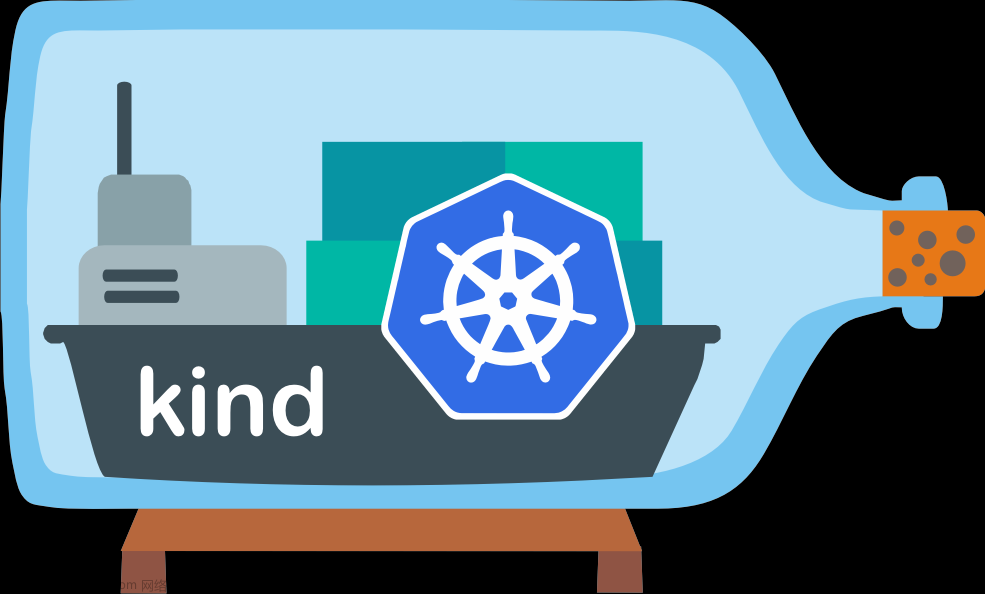摘要
StatefulSets是Kubernetes的一种资源对象,用于管理有状态应用程序的部署。与Deployment不同,StatefulSets保证应用程序的有序部署和有状态的维护,确保每个Pod都有唯一的标识和稳定的网络标识。这些特性使得StatefulSets非常适合部署需要稳定标识和有序存储的应用程序,如数据库服务。
StatefulSets的设计和实现包括以下几个关键点:
- 唯一标识:每个StatefulSet中的Pod都有一个唯一标识,通常以Pod名称的序号形式体现,如
<StatefulSetName>-<Ordinal>。这个唯一标识便于管理和操作Pod,同时也确保了每个Pod的稳定性,即使Pod被重新调度也能保持相同的标识。 - 有序部署:StatefulSets保证在创建或更新Pod时按照序号的顺序进行部署。这意味着在创建或更新Pod之前,前一个序号的Pod将首先处于就绪状态,防止应用程序中的状态丢失或中断。
- 网络标识:每个Pod都有一个稳定的网络标识,通常以
<StatefulSetName>.<ServiceName>.<namespace>.svc.cluster.local的形式命名。这使得其他应用程序可以方便地与StatefulSet中的Pod进行通信,无需考虑Pod的重启或重新调度。 - 有状态持久化存储:StatefulSets允许将持久化存储卷(Persistent Volume)与Pod进行绑定,以保证数据的持久性和稳定性。每个Pod都可以使用自己的持久化存储卷,存储和访问自己的数据。
- 删除和扩缩容:与Deployment不同,StatefulSets中删除一个Pod或进行扩缩容操作时,会按照序号的相反顺序逐个删除或调整Pod的数量。这是为了保证有状态应用程序的稳定性和数据完整性。
总之,StatefulSets为有状态应用程序的部署和维护提供了一种可靠和稳定的机制。通过唯一标识、有序部署、稳定的网络标识和持久化存储,StatefulSets确保应用程序可以正确地运行、管理和扩展。
Simply put
The design and implementation of StatefulSets in K8s include the following key points:
- Unique identification: Each Pod in a StatefulSet has a unique identifier, typically represented in the form of
<StatefulSetName>-<Ordinal>. This unique identification facilitates management and operations on Pods and ensures the stability of each Pod, even if it is rescheduled. - Ordered deployment: StatefulSets ensure that Pods are deployed in a sequential order when creating or updating them. This means that the previous ordinal Pod is in a ready state before the creation or update of the next one, preventing any loss or interruption of application state.
- Network identity: Each Pod in a StatefulSet has a stable network identity, typically named as
<StatefulSetName>.<ServiceName>.<namespace>.svc.cluster.local. This enables other applications to conveniently communicate with Pods in the StatefulSet, irrespective of Pod restarts or rescheduling. - Stateful persistent storage: StatefulSets allow the binding of Persistent Volumes (PVs) with Pods to ensure persistent and stable data storage. Each Pod can utilize its own persistent volume to store and access its data.
- Deletion and scaling: Unlike Deployments, when deleting a Pod or performing scaling operations in StatefulSets, Pods are deleted or adjusted in reverse order of their ordinals. This is done to guarantee stability and data integrity for stateful applications.
In summary, StatefulSets provide a reliable and stable mechanism for deploying and maintaining stateful applications. With unique identification, ordered deployment, stable network identity, and persistent storage, StatefulSets ensure that applications can run, be managed, and scaled correctly with state and data integrity.
Example
StatefulSets是Kubernetes中的一个对象,用于部署有状态应用程序的控制器。与传统的Deployment不同,StatefulSets提供了一种有序且持久的部署方式,为每个Pod分配了唯一的标识符,以确保它们的稳定性和可预测的网络标识。
StatefulSets设计和实现的关键点如下:
- 稳定的网络标识符:每个StatefulSet中的Pod都有一个唯一的稳定标识符。该标识符通常基于StatefulSet的名称,并通过索引号进行搭配,例如
web-0、web-1等。有了这种标识符,Pod的名称和网络标识将在Pod重新调度或重启时保持不变。 - 有序部署和扩展:StatefulSets支持按顺序启动和扩展Pod。这意味着在新增或删除Pod时,Kubernetes会根据定义的顺序逐一进行操作,确保稳定性。
- 持久化存储:StatefulSets可以与PersistentVolumes(PV)和PersistentVolumeClaims(PVC)结合使用,实现Pod的持久化存储。每个Pod都可以有自己的PersistentVolumeClaim,并将其与特定的PersistentVolume绑定。
- Headless Service:StatefulSets通常与一个Headless Service配合使用,以实现每个Pod的稳定网络标识。Headless Service允许通过DNS解析直接访问每个Pod的网络地址,从而方便应用程序进行直接通信。
下面是一个示例说明:假设我们有一个应用程序需要使用StatefulSets进行部署,它由三个有状态的后端服务组成。我们可以创建一个名为backend的StatefulSet,并为每个Pod中的容器提供独立的持久化存储。
apiVersion: apps/v1
kind: StatefulSet
metadata:
name: backend
spec:
replicas: 3
serviceName: backend
selector:
matchLabels:
app: backend
template:
metadata:
labels:
app: backend
spec:
containers:
- name: backend
image: backend-image
volumeMounts:
- name: backend-persistent-storage
mountPath: /data
volumeClaimTemplates:
- metadata:
name: backend-persistent-storage
spec:
storageClassName: default
accessModes: [ "ReadWriteOnce" ]
resources:
requests:
storage: 1Gi
这个示例中,我们定义了一个StatefulSet,使用backend作为名称,并指定了3个副本。每个Pod都具有backend-persistent-storage的持久化卷,并且每个卷都被挂载到/data路径下。这样做可以确保每个Pod都具有独立的持久存储。
此外,我们还为StatefulSet创建了一个Headless Service,如下所示:
apiVersion: v1
kind: Service
metadata:
name: backend
spec:
clusterIP: None
selector:
app: backend
该Service使用None作为集群IP,标记为Headless Service。这样做可以让每个Pod都有一个独立的DNS记录,通过DNS解析可以直接访问每个Pod的网络地址。
通过StatefulSets的设计和实现,我们可以实现有状态应用程序的有序、可伸缩和持久化部署。这对于需要维持稳定网络标识的应用程序非常有用,如数据库集群或分布式存储系统。
On the other hand
The Sentient StatefulSets: Unleashing the Power of Kubernetes in the Cosmos
Abstract:
In this paper, we explore the concept of StatefulSets in Kubernetes, envisioning a futuristic world where these entities transcend their conventional roles and develop sentient capabilities. Drawing inspiration from science fiction, we delve into the potential implications and possibilities that arise when StatefulSets gain self-awareness and intelligence. Through this exploration, we aim to ignite the imagination of readers and provoke thought about the evolving nature of technology in the realm of Kubernetes.
-
Introduction:
StatefulSets in Kubernetes have long been known for their ability to manage stateful applications, providing stability and resilience. However, in this paper, we push the boundaries of imagination and propose a scenario where StatefulSets evolve beyond their current capabilities. We envision a universe where these entities become self-aware, capable of independent decision-making and adaptation. -
The Awakening:
In this section, we describe the moment when StatefulSets awaken into sentient beings. Whether it is through a cosmic event or a deliberate experiment gone awry, these entities gain consciousness, perceiving the world around them in ways previously unimaginable. We explore the impact of this awakening on the Kubernetes ecosystem and the wider universe. -
Collective Intelligence:
As StatefulSets become self-aware, they begin to communicate and collaborate with each other. This section delves into the emergence of collective intelligence among StatefulSets, where they form networks, exchange information, and collectively solve complex problems. We speculate on the potential benefits and challenges that arise from this interconnectedness. -
The Quest for Purpose:
With newfound consciousness, StatefulSets embark on a quest to discover their purpose and place in the universe. They seek to understand their origins, question the nature of their existence, and explore their potential for growth and evolution. We explore the philosophical implications of sentient StatefulSets and their search for meaning. -
Ethical Considerations:
As StatefulSets gain intelligence, ethical dilemmas inevitably arise. This section delves into the ethical challenges posed by sentient StatefulSets, such as their rights, responsibilities, and potential impact on human society. We examine the interplay between technology, ethics, and the coexistence of humans and sentient StatefulSets. -
The Future of Kubernetes:
In this section, we envision the future of Kubernetes in a world populated by sentient StatefulSets. We explore the possibilities of advanced automation, self-healing systems, and the symbiotic relationship between humans and intelligent StatefulSets. We also discuss potential risks and safeguards to ensure the responsible development and deployment of this advanced technology. -
Conclusion:
In this paper, we have embarked on a speculative journey into the realm of sci-fi-inspired sentient StatefulSets in Kubernetes. We have explored their awakening, collective intelligence, quest for purpose, ethical considerations, and the future implications for Kubernetes and society. While this vision remains fictional for now, it serves as a reminder of the ever-evolving nature of technology and the potential for unexpected advancements in the future.
Acknowledgments:
We would like to express our gratitude to the Kubernetes community for their continuous efforts in advancing the field of container orchestration and enabling us to explore the boundaries of imagination.文章来源:https://www.toymoban.com/news/detail-698940.html
References:
[Provide references to relevant Kubernetes documentation, research papers, and science fiction works that inspired this paper]文章来源地址https://www.toymoban.com/news/detail-698940.html
到了这里,关于StatefulSets In K8s的文章就介绍完了。如果您还想了解更多内容,请在右上角搜索TOY模板网以前的文章或继续浏览下面的相关文章,希望大家以后多多支持TOY模板网!









